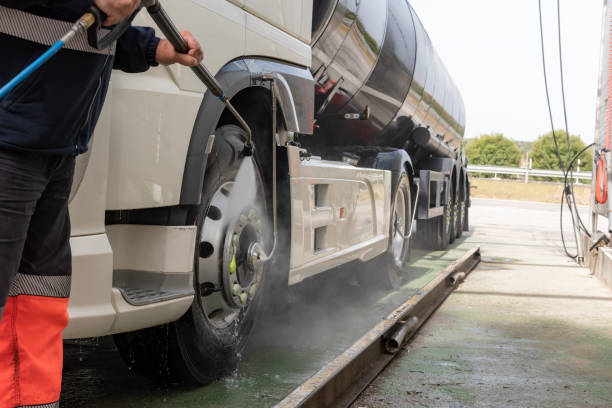Truck wheels are subjected to a variety of harsh conditions that result in the accumulation of dirt, grime, and other contaminants. These contaminants affect the appearance of the truck and impact its performance and safety. But how can professionals ensure that truck wheels are thoroughly cleaned while preserving water quality?
To address these concerns, water treatment firms have developed specialised processes for washing truck wheels that minimise water waste and environmental impact. These methods are designed to provide a thorough cleaning while ensuring the water used is treated and recycled. Contact us today to discover how these cutting-edge technologies can enhance your wheel washing practices.
Advanced Water Treatment Technologies
Water treatment firms utilise advanced technologies to ensure truck wheels are cleaned without wasting large amounts of water. These technologies allow the washing process to be both effective and sustainable. The water treatment methods used play a significant role in ensuring that the effluent meets environmental regulations. By integrating filtration systems, chemical treatments, and water recycling units, these firms reduce the water consumed and ensure it is reused. The technology used is designed to capture contaminants and oils from the wheels while filtering out debris and particles.
Key Methods Used
Truck wheel washing requires specialised equipment and methods to ensure thorough cleaning. These methods focus on removing dirt, mud, oil, and other debris from the wheels without damaging them. The most effective processes include:
- High-Pressure Cleaning: High-pressure jets of water are used to dislodge dirt and grime from the wheels, leaving them shiny.
- Manual Scrubbing: In some cases, manual scrubbing is used in conjunction with water treatments to ensure that stubborn dirt is effectively removed.
These approaches are essential for ensuring the truck wheels are free from contaminants, allowing for a thorough clean.
Water Filtration and Recycling

One of the most crucial aspects of professional truck wheel washing is the effective use of water filtration and recycling. These systems capture dirt, grease, and oils from the washing process, ensuring that the wastewater is cleaned and can be reused. The filtration system typically involves multiple stages, such as:
- Coarse Filtration: Larger particles and debris are filtered out in the first stage.
- Fine Filtration: Smaller contaminants are removed in the second stage, ensuring clean water is returned for reuse.
This approach reduces the need for fresh water, helping companies comply with environmental regulations while keeping costs low.
Chemical Treatments
In addition to physical cleaning methods, professional water treatment firms also use chemical treatments to enhance the cleaning process. Chemicals such as detergents and degreasers are added to break down oils and other tough contaminants on the truck wheels. These chemicals are carefully chosen to be effective yet environmentally friendly, ensuring that the final effluent is safe for disposal or recycling.
Maintaining Equipment and Ensuring Optimal Cleaning Results
For water treatment firms to maintain optimal performance, regular maintenance of the washing equipment is essential. This includes cleaning filters, inspecting pumps, and ensuring the proper functioning of recycling units. Well-maintained systems lead to better cleaning outcomes and ensure that the water treatment process remains efficient. Besides, technicians are trained to monitor the water quality and adjust settings to optimise results, which enhances the overall truck wheel cleaning process.
The process of washing truck wheels through professional water treatment methods ensures a clean, sustainable, and environmentally responsible outcome. Thus, incorporating advanced technologies, filtration systems, and chemical treatments allows water treatment firms to achieve effective cleaning while minimising waste. For industries looking to improve their washing processes, these professional solutions offer both efficiency and environmental compliance.





















